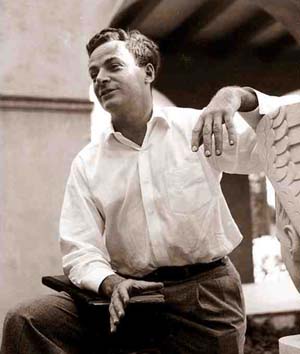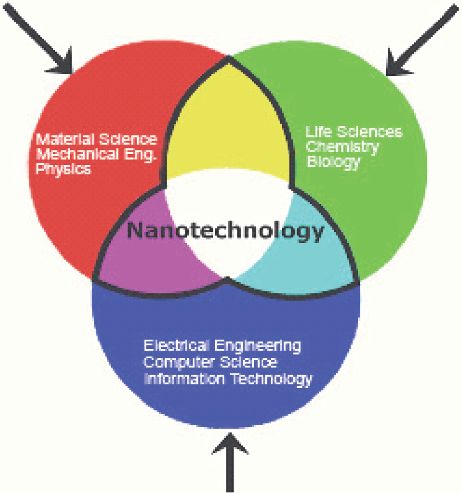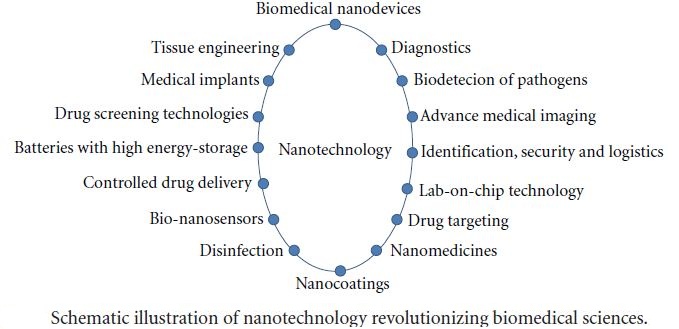“I would like to describe a field, in which little has been done, but in which an enormous amount can be done in principle. This field is not quite the same as the others in that it will not tell us much of fundamental physics (in the sense of, ``What are the strange particles?'') but it is more like solid-state physics in the sense that it might tell us much of great interest about the strange phenomena that occur in complex situations. Furthermore, a point that is most important is that it would have an enormous number of technical applications.
What I want to talk about is the problem of manipulating and controlling things on a small scale” (Citation 1). – Physicist Richard Feynman, “There’s Plenty of Room at the Bottom”. (Image Citation 1)

On December 29, 1959, physicist Richard Feynman gave a radical lecture at an American Physical Society meeting at Caltech titled “There’s Plenty of Room at the Bottom”. In this groundbreaking lecture, Feynman suggested what was known at that time to be the impossible: in principle, to make machines at a nano-scale that "arrange the atoms the way we want", and do chemical synthesis by mechanical manipulation.
And with this lecture was the birth of the idea of nanotechnology.
Nanotechnology, today, could certainly be classified as a disruptive technology. It does have the potential to change the world as we know it today. Extensive research and development in this exciting field clearly demonstrate that we have made significant breakthroughs in the arena of science, medicine, electronics and information technology which were considered quite impossible many years ago.
So what exactly is Nanotechnology? Princeton University defines Nanotechnology as “the branch of engineering that deals with things smaller than 100 nanometers (especially with the manipulation of individual molecules)” (Citation 2). Nanotechnology is basically the study of controlling and manipulating matter on an atomic and/or molecular scale.
Generally nanotech deals with structures of the size 100 nanometers or smaller in at least one dimension, and involves developing materials or devices within that size. Nanotech is very diverse, ranging from molecular self-assembly to developing new materials to controlling and manipulating matter on the minutest scales.
To get an idea of how small a nanometer is compared to a meter, think of it as a marble compared to earth. Another example would be the amount a man’s beard grows as he raises a razor to shave it! The image on the right shows a perspective of the nanoscale compared to other scales (Image Citation 2 (bottom) and Image Citation 3 (right).
Nanotechnology, being a diverse technology, has many applications in various fields. As Steve Jurvetson, of Draper Fisher Jurvetson, once wrote, it is the “nexus of the sciences” (Citation 3). (Image Citation 4).

Nanotechnology in electronics for example would allow us to increase computing power. With implementation of nanotechnology, we can bring about significant changes, a revolution in the electronics and IT industries. According to Moore’s Law, the number of transistors that can be placed inexpensively on an integrated circuit has doubled approximately every two years. The law/trend has continued for more than half a century and is not expected to stop until 2015 or later. However, after that, to further expand technology, a new alternative will be needed. Nanotechnology, by increasing computing power with quantum mechanics, can provide for that alternative. Nanotechnology in physics can help us understand the (now) mysterious atomic structure of elements by giving us a direct view of the activity of the particles themselves. As a matter of fact, many different commercial products have already been made using nanotechnology.
However, perhaps one of the most interesting and exciting implementations of nanotechnology is in the field of medicine. Feynman went on to say in his revolutionary and radical lecture:
“A friend of mine (Albert R. Hibbs) suggests a very interesting possibility for relatively small machines. He says that, although it is a very wild idea, it would be interesting in surgery if you could swallow the surgeon. You put the mechanical surgeon inside the blood vessel and it goes into the heart and ``looks'' around. (Of course the information has to be fed out.) It finds out which valve is the faulty one and takes a little knife and slices it out. Other small machines might be permanently incorporated in the body to assist some inadequately-functioning organ” (Citation 1).
What Feynman and Hibbs considered a possibility, today, 51 years later, is becoming a reality!
Advances in nanomedical technology have made it become one of the most influental technologies of the century. Nanomedical technology now expands to cover applications in many fields in medicine. Some areas of application are shown in the figure below: (Image Citation 5)

Home I Nanotechnology I Applications I Innovators I Impact I Resources I Citations I Get Involved! I About